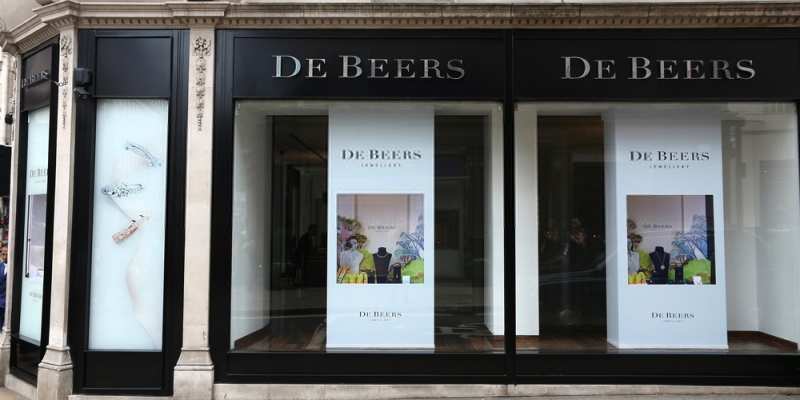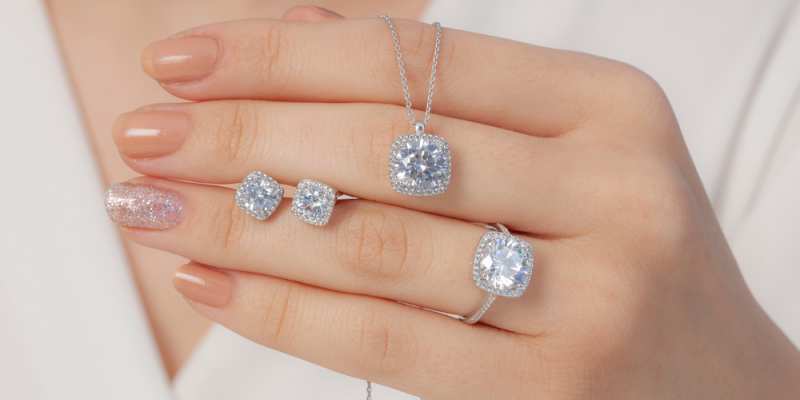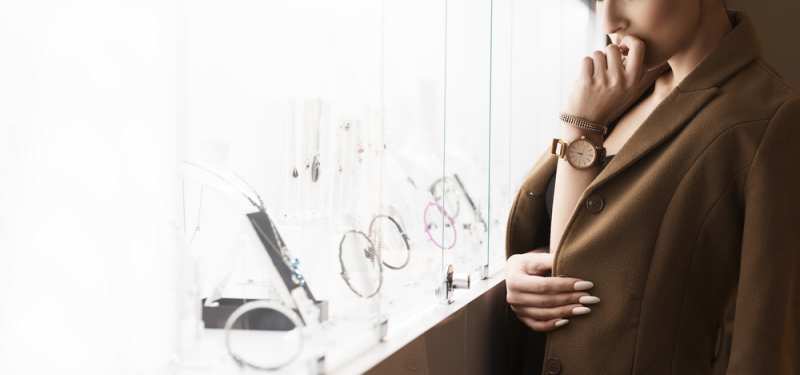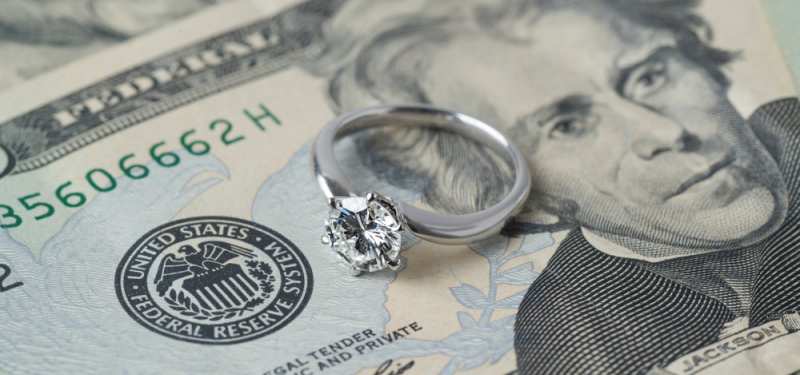Imagine walking into a jewelry store, hoping to surprise your loved one with a stunning diamond piece, only to be taken aback by the hefty price tag. It’s a familiar scenario that can leave your heart racing and your dreams of the perfect gift in doubt.
The truth is, diamond prices can often exceed initial expectations, and it’s no wonder. There are several factors that contribute to the high cost of diamonds, extending beyond simple price-fixing and market demand.
If you’ve ever wondered why diamonds command such substantial price tags, what makes them the most expensive gemstones, or if you’re seeking valuable tips to help you choose an authentic diamond, you’re in the right place.
Keep reading to unravel the mysteries of diamond pricing and gain insights that will guide you towards making informed choices in your quest for the perfect diamond.
DESIGN YOUR OWN ENGAGEMENT RING: START WITH A SETTING OR START WITH A DIAMOND. IT’S REALLY UP TO YOU!

De Beers – A Familiar Name In The Industry
In the 1800s, diamonds were a rarity and not widely accessible to ordinary people. They were primarily owned by monarchs and religious authorities, and their trade mostly centered around Brazil and India.
However, everything changed with the Diamond Rush in South Africa during the early 19th century. Businesspeople recognized the profit potential and began investing in diamond fields. One notable figure in this transformation was Cecil Rhodes, an American entrepreneur who rented water pumps and eventually purchased diamond fields, including those owned by the De Beers brothers.
Rhodes’ efforts led to the establishment of the De Beers Mining Company, which quickly gained control over all South African diamond mines by 1888. The company formed a monopoly over the distribution and sale of diamonds from the region and established connections with prominent firms in London and Israel.
Following Cecil Rhodes’ passing, the Oppenheimer family took charge and made significant changes in diamond distribution, with price becoming a crucial factor. During the Great Depression, diamond prices plummeted, prompting the Oppenheimer family to launch the iconic “A Diamond Is Forever” campaign.
This campaign aimed to encourage the purchase of diamond rings, convincing men that the size of the diamond they bought for their partners was a reflection of their love. The campaign was incredibly successful, leading to a massive increase in wholesale diamond prices from $23 million to a staggering $21 billion.
The impact of the De Beers Company and the “A Diamond Is Forever” campaign can still be observed today. Statistics indicate that over 75% of American brides wear a diamond ring, with an average price of around $4,000.
This history teaches us the power of effective advertising and market exploitation, as diamonds have become the top-selling symbol of love, commitment, and endurance.
However, even the De Beers monopoly eventually waned, with diamond distribution dropping from 75% to 35%. Factors contributing to this decline include the rise of synthetic diamonds, new independent diamond suppliers entering the market, the separation of the Argyle Mine in Australia, and allegations of price-fixing and antitrust campaigns. Additionally, new diamond mines were discovered in Canada, further diversifying the market.

Cut And Carat Affecting The Price?
The price of a diamond is primarily determined by two influential factors: its cut and carat weight. Jewelers and gemologists evaluate the grade of a diamond’s cut to assess its potential price.
Here’s a quick reminder of how diamond cuts are graded:
- Excellent
- Very good
- Good
- Fair
- Poor
The price of a diamond is closely related to the quality of its cut. Precisely cut facets on a diamond allow for optimal light reflection and refraction, enhancing its value. The facets, which are the flat surfaces on the gem, play a crucial role in determining a diamond’s worth.
The cut of a diamond directly impacts its beauty, and several factors tied to the cut can influence its price positively or negatively. These factors include:
- Proportion
- Symmetry
- Brilliance
- Fire
- Scintillation
- Finishing details
The second significant factor is the carat weight. While many people associate carat with size, it actually refers to the weight of the diamond. One carat is approximately equal to 200 milligrams. Naturally, as the carat weight increases, so does the price of the diamond.
It’s worth noting that smaller diamonds are generally harder to find in the diamond industry, making it more challenging to find diamonds that fit within most people’s budgets.
For those seeking the highest quality cut, the round brilliant cut is an excellent choice. Here’s a glimpse of diamond prices based on carat weight:
- 0.5 carats: $1,220 – $5,800
- 1 carat: $2,500 – $18,000
- 2 carats: $4,200 – $29,000
- 3 carats: $7,200 – $51,000
- 4 carats: $8,400 – $71,500
- 5 carats: $9,600 – $69,500
While these prices may exceed the budgets of many individuals, there are ways to purchase beautiful and high-quality jewelry without having to spend multiple months’ worth of salary.

How To Buy The Perfect Diamond? Crucial Factors
You can find the perfect diamond that fits within your budget by considering a few important factors. Let’s delve into them.
Cut and Carat:
When choosing a diamond, decide on the cut that suits your preferences and budget. Popular options include round, cushion, and princess cuts. It’s advisable not to settle for poor-quality diamonds, especially for engagement rings, as they may lack brilliance and lose their appeal over time. Look for fair-quality or better cuts. Additionally, pay attention to the number of chevrons, as more facets reflect light better and enhance the diamond’s attractiveness. A lower number of chevrons results in a smoother appearance.
Color:
Consider the color of the diamond. Colorless diamonds are the most expensive, with D-grade diamonds being highly sought after. However, colored diamonds can also be captivating. Red diamonds are the most expensive, followed by pink, purple, violet, yellow, orange, gray, brown, and fancy yellow diamonds. Keep in mind that color preferences are subjective, and you can find beautiful diamonds in a variety of hues.
Fluorescence:
Fluorescence refers to a diamond’s reaction to intense or UV light. Strong fluorescence can impact a diamond’s appearance, and diamonds with stronger fluorescence may be available at a discount. If you have a limited budget, considering diamonds with stronger fluorescence could be a viable option.
Seek Expert Advice:
If you’re investing a significant amount of money in a diamond, it’s wise to have it examined by an expert. Their opinion can be invaluable in making a confident purchase. In the vast jewelry market, people often make mistakes by buying low-quality diamonds at inflated prices. Some common mistakes include overpaying, having unrealistic expectations, and purchasing uncertified diamonds. Familiarize yourself with basic information about the diamond, such as the cut, carat, and clarity. Certified diamonds, approved by organizations like GIA or AGS, provide assurance of authenticity.
By considering these factors and seeking expert guidance, you can avoid common pitfalls and make a well-informed diamond purchase that suits your budget and preferences.

Final Thoughts
To summarize, the main points regarding why diamonds cost a significant amount of money are as follows:
- De Beers: During the 19th century, the company De Beers played a pivotal role in diamond trading, controlling over 75% of the diamonds from South Africa.
- “A Diamond Is Forever” Campaign: This campaign, launched later, increased diamond sales and prices by promoting the idea that a larger diamond signifies greater love and commitment.
- Cut and Carat: The two crucial factors that significantly influence the price of a diamond are the quality of the cut and the number of carats. Diamonds with refined cuts and higher carat numbers generally command higher prices.
- Save Money: It is advisable to save money before purchasing a diamond, as higher-quality diamonds tend to come with a higher price tag.
- Research and Authenticity: When buying a diamond, it is important to research the background of the jewelry store and verify the authenticity of the diamond to avoid scams or purchasing low-quality gems.
We hope these points have provided helpful insights into why diamonds are priced the way they are.


